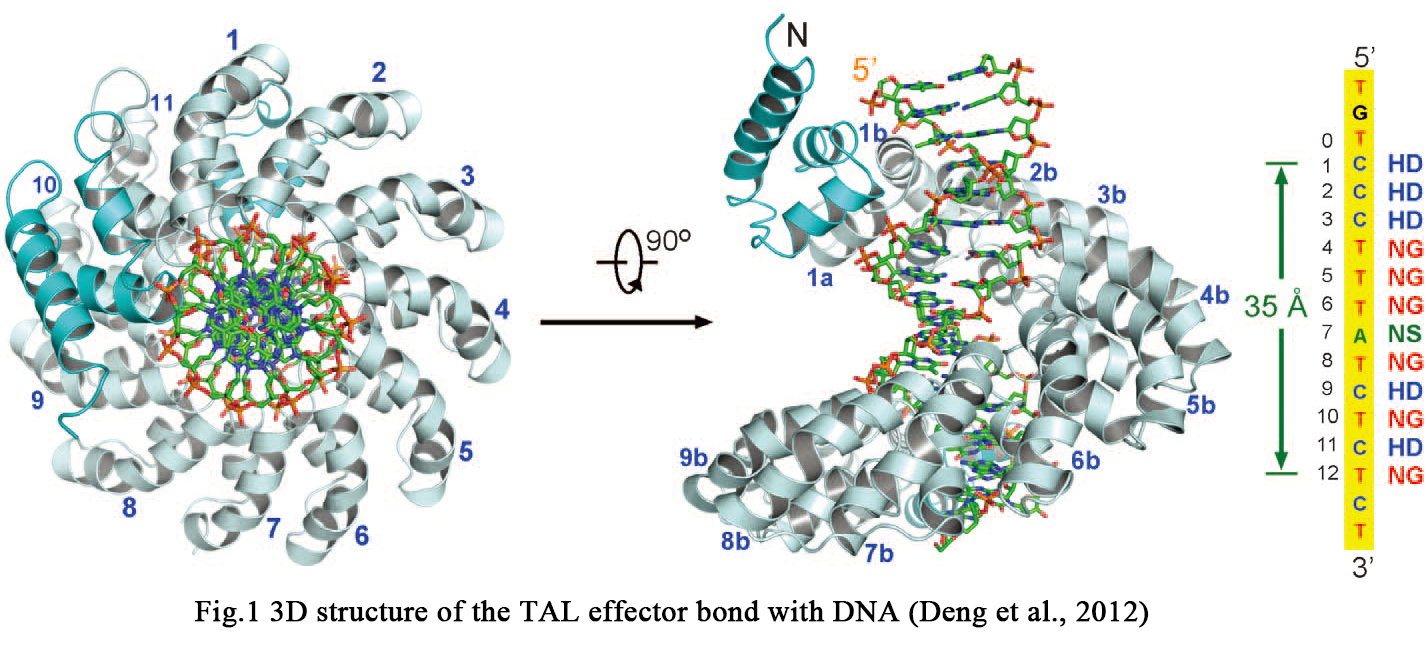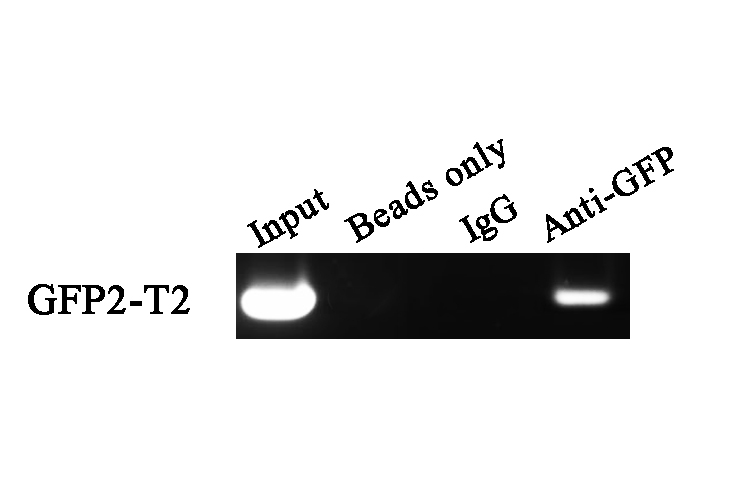Part:BBa_K1789009
TALE2
This is a engineered TAL effector that can bind with the DNA sequence 5'-GATAAACACCTTTC-3'
Usage and Biology
Sequence and Features
Sequence and Features
- 10COMPATIBLE WITH RFC[10]
- 12COMPATIBLE WITH RFC[12]
- 21INCOMPATIBLE WITH RFC[21]Illegal BamHI site found at 2083
- 23COMPATIBLE WITH RFC[23]
- 25COMPATIBLE WITH RFC[25]
- 1000INCOMPATIBLE WITH RFC[1000]Illegal BsaI.rc site found at 1177
Illegal BsaI.rc site found at 1381
Experimental Validation
Sequencing
This part is sequenced as correct after construction.
ChIP-PCR Analysis
To evaluate whether TALE1 protein can effectively target the binding motifs on plasmid DNA scaffold, the ChIP-PCR analysis was conducted. For this experiment, the plasmid of pSB1C3-Plac-RBS-TALE2-GFP2-Ter-Scaffold2 was constructed, interpret into E.coli BL21 (DE3), and subsequently induced expression by IPTG. Bacterial lysis samples were cross-linked in 1% formaldehyde without ultrasonic treatment due to the small size of binding plasmid, and immunoprecipitated with anti-GFP polyclonal antibody. Because the binding motifs of TALEs are containing highly repeated sequences, and their flanking sequences are also homologous to the other parts of the harboring plasmid, the primers used for ChIP-PCR were forward P3 and reverse P4 for GFP2 amplification (Fig. 1).
Fig. 1 A schematic showing the primers and the plasmid regions tested in ChIP assays. P3/P4 was designed for TALE2-GFP2 ChIP assay.
As shown in Fig 2, a 251 bp of DNA fragments was amplified from the precipitates of TALE2-GFP2-Scaffold2 using anti-GFP antibody. However, the negative control immunoprecipitations using no antibody (beads only) or normal rabbit IgG showed no amplification signal. The amplified fragment was confirmed by sequencing. These results indicate that TALE-GFP2 can specifically binds to the corresponding plasmid DNA binding motifs in vivo.
Fig. 2 Determination of the binding abilities of TALE2-GFP2 to corresponding DNA scaffolds. Input indicates an aliquot of total DNA. Antibodies used for immunoprecipitation are indicated above the lanes.
References
1. J. Boch, U. Bonas, Xanthomonas AvrBs3 family-type III effectors: discovery and function. Annual review of phytopathology 48, 419 (2010).
2. J. Boch et al., Breaking the code of DNA binding specificity of TAL-type III effectors. Science 326, 1509 (Dec 11, 2009).
3. M. J. Moscou, A. J. Bogdanove, A simple cipher governs DNA recognition by TAL effectors. Science 326, 1501 (Dec 11, 2009).
| None |



